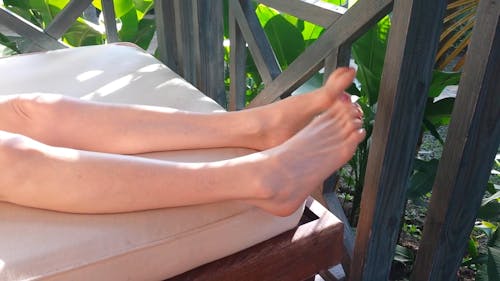Explore Plantar Fasciitis Treatment
For some professional athletes, simply altering running shoes can considerably reduce plantar fascia discomfort. A physical therapist can employ a number of various taping strategies to support the plantar fascia, providing it a chance to heal. Some shoes can be fitted with inserts. One example is an orthotic, which covers the length of the shoe.
Another choice is a heel cup. This insert is created to support and cushion the heel. Plantar fasciitis is connected with less versatility in the ankle, Achilles tendon, and calf muscles. Mild extending to improve versatility can make the biomechanics of standing, strolling, and running less stressful for the plantar fascia.
Utilizing gentle pressure, roll the tennis ball backward and forward under the foot. Stand 18 inches far from a wall with feet about 6 inches apart and position hands versus the wall, at shoulder height. Without moving feet, lean into the wall, flexing the foot and extending the Achilles tendon and calf muscles Sit on the floor with legs directly in front.
Smart Ways to Plantar Fasciitis Treatment in 2020
Stretches like these last two, in which the top of the foot and toes move towards the shin, are called dorsiflexion stretches. Applying a cold-pack or bag of ice to bottom of the foot might offer discomfort relief from plantar fasciitis. Relief can likewise be found by rolling the bottom of the foot on a frozen plastic water bottle.
Protocol Principles. For runners, increasing the number of actions per mileusing a shorter stride however increasing cadence to maintain speedmay lower the tension on the plantar fascia even though there will be more actions per minute.1.Additional weight puts an increased stress on the plantar fascia tissue. Shedding excess pounds will lighten the load on the body's musculoskeletal system, consisting of the plantar fascia.
This prevents the plantar fascia from resting in a contracted position. (Understandably, lots of people discover these splints tough to sleep in.). While it is ruled out basic treatment, deep myofascial massage might promote blood flow and recovery. While not all experts agree, some believe making use of manual manipulation/mobilization (by a chiropractic specialist or other competent health expert) together with workout is a reliable method to treat plantar fasciitis.2, People with consistent, moderate to extreme cases of plantar fasciitis, may use these non-medical treatments in conjunction with medications, injections, or surgical treatments.
The Juice is Loose - Responsible Plantar Fasciitis Treatment in 2020

Medications are not a treatment for plantar fasciitis and must be utilized in conjunction with other treatments. Non-steroidal anti-inflammatory drugs are used to reduce swelling and swelling, and are suggested for patients experiencing moderate to extreme discomfort (Click Here For More Info). NSAIDs consist of aspirin (e.g. Bayer), ibuprofen (e.g. Advil), naproxen (e.g. Aleve), and cox-2 inhibitors.
dexamethasone) through healthy skin to the aching location.1 Iontophoresis might be suggested to clients with plantar fasciitis who can't tolerate injections or wish to prevent injections. If non-medical treatments and medications do not offer remedy for plantar fasciitis, clients might consider injections. 1. Wellenkotter J, Kernozek TW, Meardon S, Suchomel T.

Int J Sports Medication. 2014; 35( 9 ):779 -84.2. Bronfort G, Haas M, Evans R, Leininger B, Triano J. Efficiency of manual treatments: the UK evidence report. Chiropr Osteopat. 2010; 18:3.3. Clar C, Tsertsvadze A, Court R, Hundt GL, Clarke A, Sutcliffe P. Scientific efficiency of manual treatment for the management of musculoskeletal and non-musculoskeletal conditions: organized evaluation and upgrade of UK proof report.
An Excellent Lesson about Plantar Fasciitis Treatment
The plantar fascia is a long, thin ligament present along the bottom of the foot that develops the arch of the foot. It extends from the heel bone, and then splits and fans out to connect itself to the toes. Plantar fasciitis is a condition where the plantar fascia ends up being irritated from overstretching or overuse, causing pain in the heel and bottom of the foot.
Plantar fasciitis takes place when you strain or irritate the plantar fascia ligament. Repetitive stress can lead to tiny tears in the ligament, causing pain and swelling, which can make strolling tough. Stress can occur due to: High or low foot arch Weight problems or abrupt weight gain Tight Achilles tendon which links the calf muscles to the heel Starting a brand-new activity or increasing the strength of an activity Using improper shoes with soles that are too soft, do not fit well or use bad arch support The significant grievance of plantar fasciitis is discomfort and stiffness in the heel and foot.
Your physician might watch how you stand and stroll, and evaluate associated conditions such as high arches. X-rays of the foot can be taken if your medical professional suspects a stress fracture, a hairline fracture in the bone, or other associated conditions such as a heel spur, which is additional calcium deposit on the heel bone.
The A - Z Guide Of Plantar Fasciitis Treatment
Conservative treatment procedures include: Rest: Rest is the initial step that is considered for reducing pain and avoiding additional damage to the ligament. Ice: Rolling your foot over ice can be extremely effective in lowering swelling, and is suggested for 20 minutes, 3-4 times a day Medications: NSAIDs (non-steroidal anti-inflammatory drugs) might be recommended for relief of pain and inflammation Exercise: calf stretches and plantar fascia stretches work in eliminating discomfort A steroid injection may be administered into the plantar fascia for minimizing discomfort and inflammation Supportive shoes and orthotics may likewise be suggested to decrease the pain while strolling or standing Night splints can be recommended by your physician to help extend the plantar fascia while sleeping Physical treatment might be recommended for guideline on stretching exercises, massage and ice treatments PT might utilize extracorporeal shockwave treatment (ESWT), which utilizes high-energy shockwave impulses to promote recovery of the harmed plantar fascia tissues Surgical treatment is considered only if conservative treatment does not provide reliable relief after 12 months.
Gastrocnemius recession: Tight calf muscles or gastrocnemius muscles can strain the plantar fascia. To release this stress, your cosmetic surgeon will surgically extend the calf muscle, and increase the motion of the ankle (Great Site). The surgical treatment can be carried out by open incision or endoscopically through a little cut by utilizing an endoscope, which is a long instrument with a small video camera connected.
Your surgeon will partly cut the plantar fascia ligament to alleviate the stress. The surgical treatment can be performed endoscopically however open cut is simpler to carry out and is associated with lower risk of nerve damage. Complications are rare following surgical treatment to treat plantar fasciitis, however just like any surgical treatment, they can occur.
Plantar Fasciitis Treatment - Lessons Discovered
If you are experiencing symptoms of plantar fasciitis, detailed treatment from our foot specialists is offered at ORA Orthopedics. As the biggest and most advanced orthopedic practice in the Quad Cities, ORA Orthopedics offers the greatest options in care to kids and adults with a large selection of musculoskeletal conditions, consisting of plantar fasciitis and other unpleasant or painful foot issues (Hop Over To This Web-site).
This condition is usually marked by higher foot discomfort and stiffness after not during workout or extended durations of lack of exercise. Plantar fasciitis might also trigger bone stimulates, or little boney developments, to develop on the heel bone. The knowledgeable medical professionals and personnel at ORA Orthopedics' Foot and Ankle Center of Excellence are trained in the most current treatment methods and provide patient-focused care that is second to none in the Quad Cities.
Tidak ada komentar:
Posting Komentar